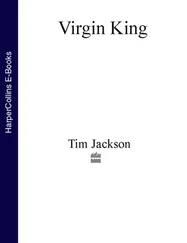It wasn’t easy to follow his thinking. D’Amato frequently meandered off the point, diverted by some inner music into other ideas, anecdotes, and aphorisms, all related to boxing. He seemed to speak about obvious, self-evident things in complex ways—at times getting lost in the web of his own spun-out thought. Often he would stop himself and ask, “What was I talking about?” Ultimately, he’d manage to return to the original point, which he would then complete as if he’d never strayed.
For Tyson, not used to having to sit and listen for so long to one person, let alone an old white man accustomed to a captive audience, D’Amato must have seemed both foreign and annoying. At the same time, he was also mesmerizing.
Ewald remembered the day. As she watched Tyson drive away with Stewart, the car suddenly stopped. Tyson jumped out and ran back to her. “We had all these rosebushes around the house. He asked if he could take some flowers back to Tryon. ‘I’ve never seen roses before,’ he said. ‘I thought only the very rich people grew roses. I want to show them to the other kids.’”
Ewald found out later that by the time Tyson got back to Tryon, the roses had died.
D’Amato insisted that Stewart provide proof of Tyson’s age. He couldn’t believe that any boy of thirteen was both that physically developed and mentally focused. Stewart looked in the Tryon records, but he couldn’t find a birth certificate. He did, however, get verification of Tyson’s birthday from New York City officials.
Stewart took Tyson back to Catskill for three more visits. All during this period at Tryon, Tyson was conforming even more to the role of model student. “When he did something wrong, any little thing, he’d ask me, ‘Will you still work with me?’ He didn’t want to take the chance of losing me or missing out on the opportunity to live with Cus,” Stewart said.
D’Amato watched him box but didn’t offer much instruction. He spent more time alone with Tyson, talking, but also listening. He was more interested in the boy’s mind than in his body. He wanted to see the bends in Tyson’s mind and the distortions of his heart. Sometimes the more troubled the boy, the better—it gave D’Amato the chance to completely reorder the psychic furniture. That was the core of his method, on which all the other training depended. He’d knock and bang until the boy opened up, and then he’d stomp about inside, pointing to the disorder to make the boy see the truth about himself. And the truth he was most interested in was human fear. D’Amato believed that a boxer, by confronting fear and using it effectively in the ring, assured his success—the imposition of the will through violence.
Of course, D’Amato’s method didn’t always make a champion. Sometimes all that D’Amato’s mind-work produced was a more confident young man, not a champion boxer. Many of the boys left him because he was too strict about what they did, both in and out of the ring. And D’Amato had yet to see any of his protégés—Patterson and Torres included—execute fully his unique style of boxing, a style that, as far back as the 1950s, his critics had ridiculed. The D’Amato style required almost robotlike training, intense concentration, extreme confidence, and superb emotional control. D’Amato believed that when executed to perfection, especially by a fast-punching heavyweight, the style would produce an unbeatable boxer.
Tyson had the kind of hand speed D’Amato required and certainly, given his size at the age of thirteen, the potential to grow into an imposing natural heavyweight. D’Amato also realized that he had a teenager whose psychic furniture was disposed in a chaotic and entangled clutter of fear and insecurity. Tyson wanted desperately to find order and meaning in his life, but didn’t know how. D’Amato did. “After they’d talked for hours, Cus decided Mike had it,” said Ewald. “He told me, ‘Camille, this is the one I’ve been waiting for all my life. My third champion.’”
* * *
Transferring Tyson into D’Amato’s care wasn’t easy. Tyson had been at Tryon only six months when Stewart raised the issue with state officials. There were problems. Tyson was still only thirteen; the mother’s approval was needed. A troubled urban teenager would be put in a small-town school, with unforeseeable consequences. And there was the matter of his support. Who would pay? D’Amato?
D’Amato’s situation looked far better than it actually was. He had declared bankruptcy in 1971 and still owed hundreds of thousands of dollars to the Internal Revenue Service, a by-product of his turbulent years as a fight manager. Ewald, however, owned the house. And they derived income from a variety of sources. Local and state officials supplied funding for D’Amato and some of his live-in fighters to train local boys in the Catskill gym. Some of the older boys who already lived in the house, and were training to become professionals, worked part-time. And the parents, if they had money, contributed.
One unusual source of funds was Jim Jacobs and Bill Cayton, who had a company in New York that licensed out the rights to their collection of fight films. The two also had experience managing fighters. From them D’Amato got a monthly stipend of one thousand dollars. The money covered expenses for the gym, but mostly paid for the house. For their stipend Jacobs and Cayton expected, some day, to get a promotable fighter, who would repay the investment. It was an unusual arrangement, highly speculative from a business standpoint, and tolerated mostly because of D’Amato’s long friendship with Jacobs. So far, the investment hadn’t produced a fighter worthy of professional development.
Stewart and D’Amato prevailed with the state. On June 30, the day he turned fourteen, Tyson was released into D’Amato’s custody. His life was about to become intimately intertwined, for better or worse, with one of boxing’s most unusual personalities.
Chapter Two
Constantine D’Amato was born January 17, 1908, in a small tenement near the intersection of Southern Boulevard and 149th Street in the area of the Bronx known as Classen Point. His father had come to New York from Italy in 1899 and worked delivering ice and coal. In all, there were eight sons. Three died in infancy. D’Amato was the second youngest. In Italian the first n of his name was not pronounced, so it became Costantine, then Coster, Cos, and eventually Cus.
His mother died when D’Amato was four. His father cared for the boys as best he could but lost them, as it were, to the streets. Love alternated with beatings. Many beatings. The boys respected the father, though. He didn’t put up with injustice. He was the kind of man who showed respect to those he felt deserved it and hatred for those who didn’t.
D’Amato took the beatings with the attitude that he had to accept the consequences of his actions. “I knew I deserved it,” D’Amato said in a 1976 interview titled “The Brujo of Gramercy Gym,” published in a periodical called Observations From the Treadmill . “I knew before I got hit what I was getting hit for, and I knew before I did what I did exactly what was gonna happen, just like day follows darkness. There was nothin’ to be resentful about.”
His father, a former wrestler, loved boxing. D’Amato’s older brother Jerry trained at a gym in the Frog Hollow section of the Bronx. It later became famous as Stillman’s. D’Amato carried Jerry’s bags and watched. One day, Jerry got in a fight with a policeman—and was shot dead.
D’Amato had his share of scraps. At twelve, in a street fight with an older man, he suffered a blow to the head that partially blinded him in the left eye. A deviated septum caused breathing difficulties (hence the odd blowing). Still, D’Amato never backed down from a good fight—that is, when he could fight for what he believed was right.
Читать дальше










![Brian Thompson - A Monkey Among Crocodiles - The Life, Loves and Lawsuits of Mrs Georgina Weldon – a disastrous Victorian [Text only]](/books/704922/brian-thompson-a-monkey-among-crocodiles-the-life-thumb.webp)

